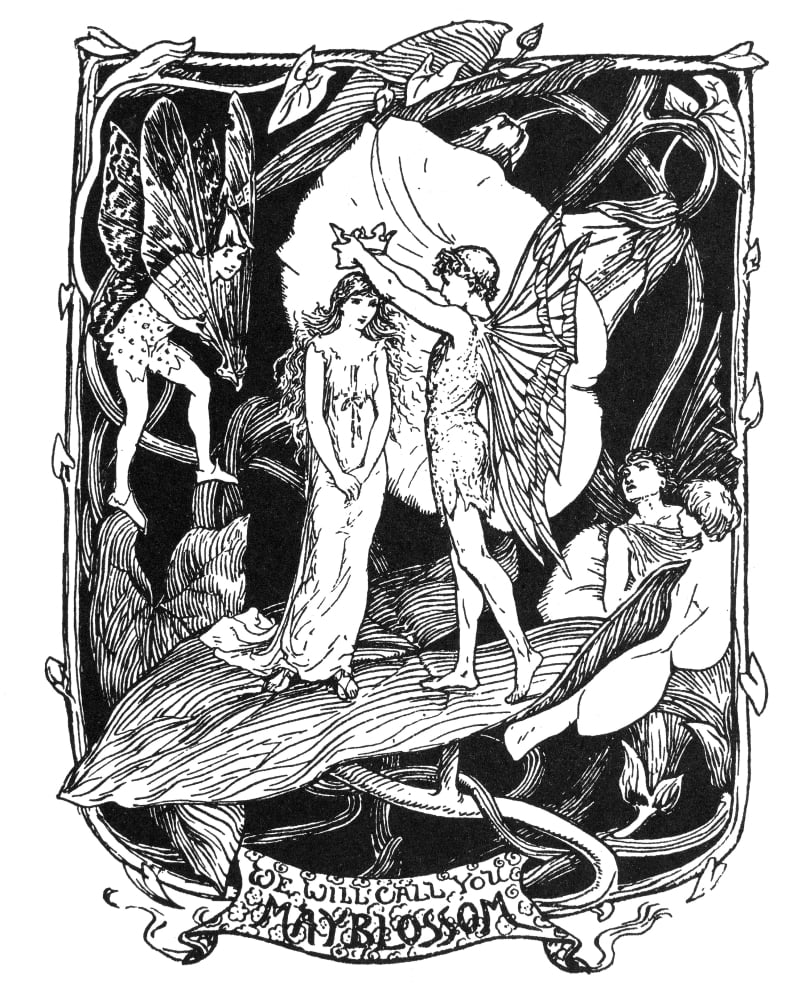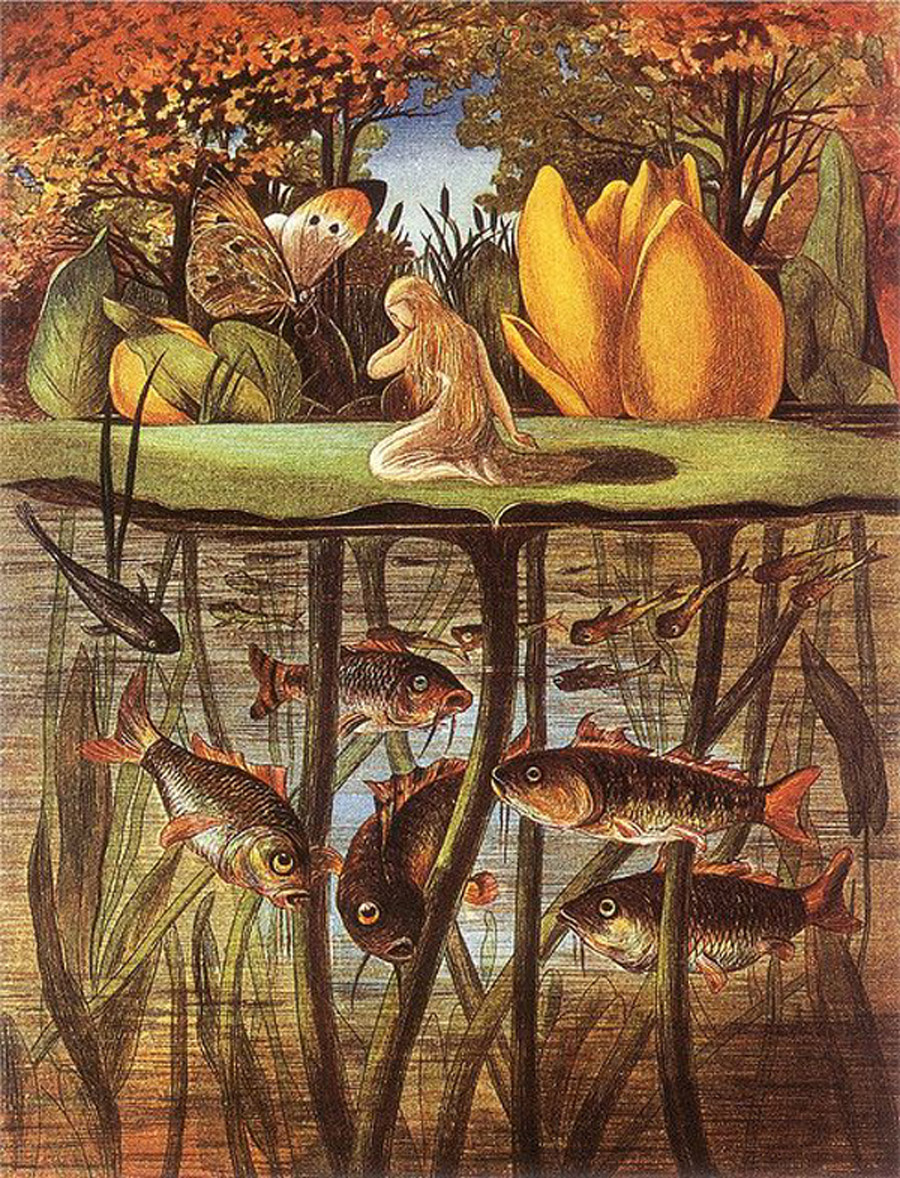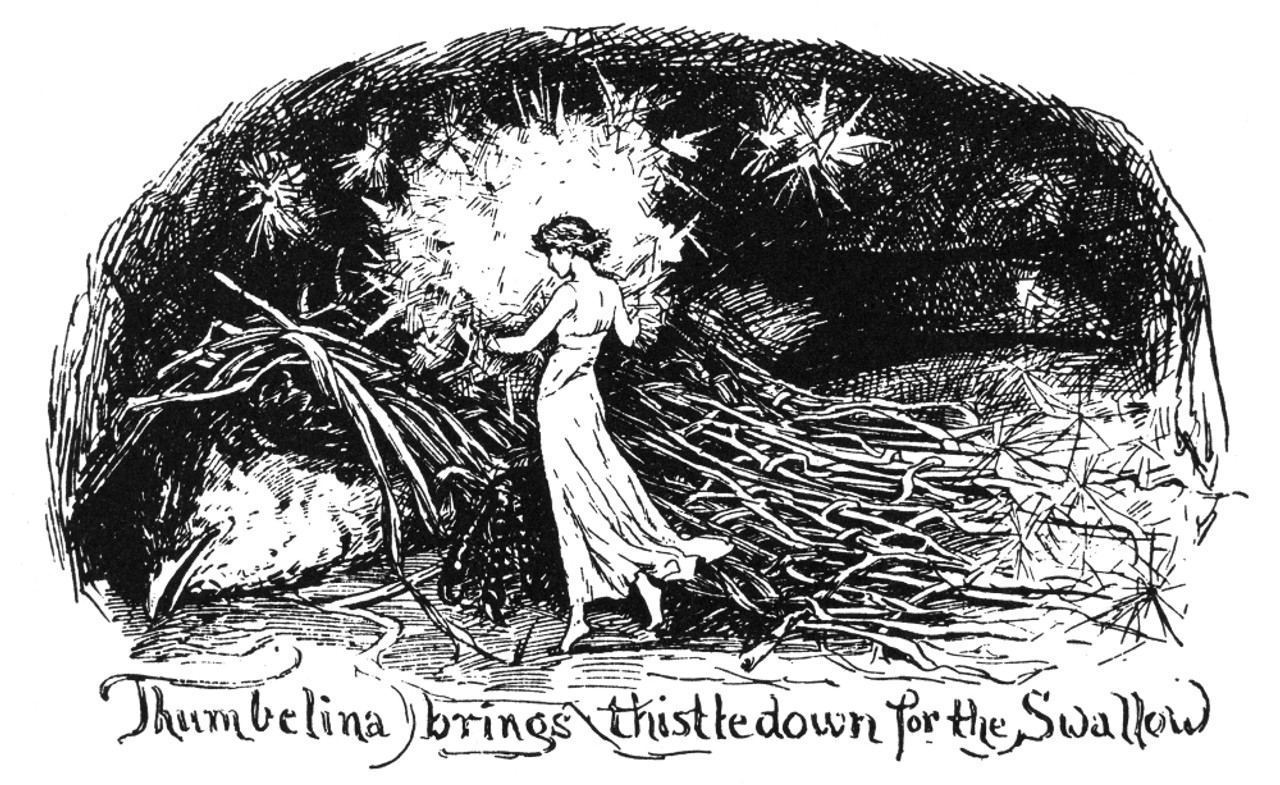Thumbelina by Hans Christian Andersen

Thumbelina illustration by Henry J. Ford, public domain
I wanted to share something cute and sweet for Valentine's Day, so I settled on the fairy tale titled "Thumbelina," written by Hans Christian Andersen. His stories are usually super dark and depressing, but I think this one is pretty tame.
A lot of people say there's not much of a point to "Thumbelina"; I have to disagree. While it's certainly a simple tale, it's also about "belonging" - about someone who's lost, who doesn't quite fit in, but eventually finds their place in the world. I hope you enjoy it as much as I do.
Thumbelina
Our story starts with a woman who desperately wants a child but can't conceive one. Just as the characters in many other fairy tales do, the woman turns to magic to make her wish come true.
She goes to a witch and tells her she'd "like to have a little child," then asks the witch where she might find one. The witch says that's easy enough, sells the woman a barley seed, and tells her to go home and plant it.
The woman follows the witch's instructions, and once she plants the seed, it grows into what Andersen describes as a large flower that looks like a tulip. The woman kisses the flower's red and yellow petals, and it bursts open to reveal a teensy girl no taller than a thumb.
I'm sure you know where this is going: the woman takes the girl in as her daughter and names her Thumbelina.
From the way Andersen describes the days that follow, it seems Thumbelina and her mother are overjoyed to be together. But tragically, their happiness doesn't last. Because one night, Thumbelina is kidnapped (bed and all) by an old mother toad who plans to force Thumbelina to marry her horrible toad son. When Thumbelina awakes the next morning, trapped on a lily pad in the middle of a stream, the mother toad tells her she's going to be the toad son's bride. At this, Andersen says Thumbelina "cries bitterly," and understandably so. Unless I was a toad, I wouldn't want to marry one either - gross. Some of the fish in the stream hear Thumbelina's cries and help her escape. They gnaw at the stem of the plant she's trapped on until it snaps, and she's carried away by the water, far from the toads. For a time, she travels from place to place, until finally a May bug sees her and decides she's quite pretty, despite not being a May bug. He decides he wants to kidnap her, just as the mother toad kidnapped her, and so he grabs her up and takes her to his tree. There, he feeds and houses her, and he continuously tells her how pretty she is. Soon a bunch of other May bugs pay Thumbelina and her latest kidnapper a visit. Jealous of Thumbelina's beauty, the lady May bugs start insulting her. They call her ugly, over and over, and eventually they convince her kidnapper that she isn't worth his time. He releases her, and she's free once again. Over the summer, she lives alone in the woods. But as winter gusts in, she can no longer survive by herself. The leaf she was using for shelter shrivels up, and her clothes become so tattered she can't stay warm. |

Thumbelina illustration by Eleanor Vere Boyle, public domain
After a while of wandering, she stumbles upon a harvested grain field. It's there that she finds the home of a field mouse, and the mouse takes her in for the winter, so long as she agrees to keep the house tidy and tell stories. She does just that, and Andersen says she has "a very good time of it." But even after everything she's been through, she still isn't allowed to simply exist. Once a week, the mouse has a visitor: a wise, wealthy, well-dressed mole, and the mouse suggests that she marry the mole, much to her dismay. Although the mole is blind and doesn't love the sun and flowers as Thumbelina does, Andersen asserts that the creature falls for her. He even digs a tunnel between his house and the mouse's, which I assume is so that they can all visit each other more easily. However, he warns Thumbelina and the mouse that there's a dead bird in the tunnel, and to not concern themselves with him when they see him while traveling back and forth. The mole and the mouse are quite cruel about the dead bird, but Thumbelina can't stop thinking about him, as she imagines he could have been the bird that sang to her in the summertime and brought her joy. Since the bird hasn't begun to decay, Thumbelina goes back to him late one night and covers him with some hay. She rests her head on his chest and hears a heartbeat - as it turns out, the bird isn't dead, just numb from cold, and as Thumbelina warms him up, he "comes back to life." Thumbelina cares for the bird throughout the rest of winter and keeps him a secret from the mole and the mouse. When spring comes, the bird plans to fly away, and he offers to take Thumbelina with him. She feels guilty leaving the mouse, though - so the bird flies away, and Thumbelina stays with the mouse. |

Thumbelina illustration by Henry J. Ford, public domain
Thumbelina soon realizes she's made a mistake by staying with the mouse. The mouse tells Thumbelina that she will marry the mole; she doesn't have a choice in the matter. The mole has proposed, and they're to be wed at the end of summer.
All summer, Thumbelina is forced to prepare for the wedding, and no matter how much she protests the union, the mouse won't listen. She even threatens to bite Thumbelina if the girl doesn't go through with the marriage. Like, jeez, lady - if you like him so much, why don't you marry him?
Anyway, on the day of the wedding, Thumbelina says goodbye to the sun, as being the mole's wife means living deep in the ground and never seeing its beautiful light again, but just then, the bird she nursed back to health shows up. She tells him all about how she's being forced to marry the mole, and he offers to take her far from the mouse and the mole. She readily accepts his offer this time.
The bird flies Thumbelina far, far away. Finally they reach his home, where many beautiful flowers bloom. He tells Thumbelina that any flower there can become her new home - she just needs to tell him which one she'd like to live in. He adds that he'll fly her to it, and that she will "have all her heart desires."
Overjoyed, Thumbelina picks a flower. The bird takes her to it, and lo and behold, what awaits her there isn't just a new home.
There's a handsome young man with glittering wings standing on the flower Thumbelina picked, and the young man is no bigger than Thumbelina herself. As it turns out, he's a flower spirit; all the flowers growing there have spirits, but he's the king of all of them. Thumbelina and the king fall in love and get married, and out of all the gifts they receive at their wedding, Thumbelina's favorite is a pair of wings, which she uses to flitter beneath the warm sun from flower to flower. I hope you enjoyed February 2024's favorite folktale! |

Receive a free book and never miss an update from A. P. Mobley by signing up for her newsletter, War on the Gods Army!
Thanks for joining War on the Gods Army!
Be sure to check your email inbox for your free book. If you don't see it, check your spam and promo folders for it.